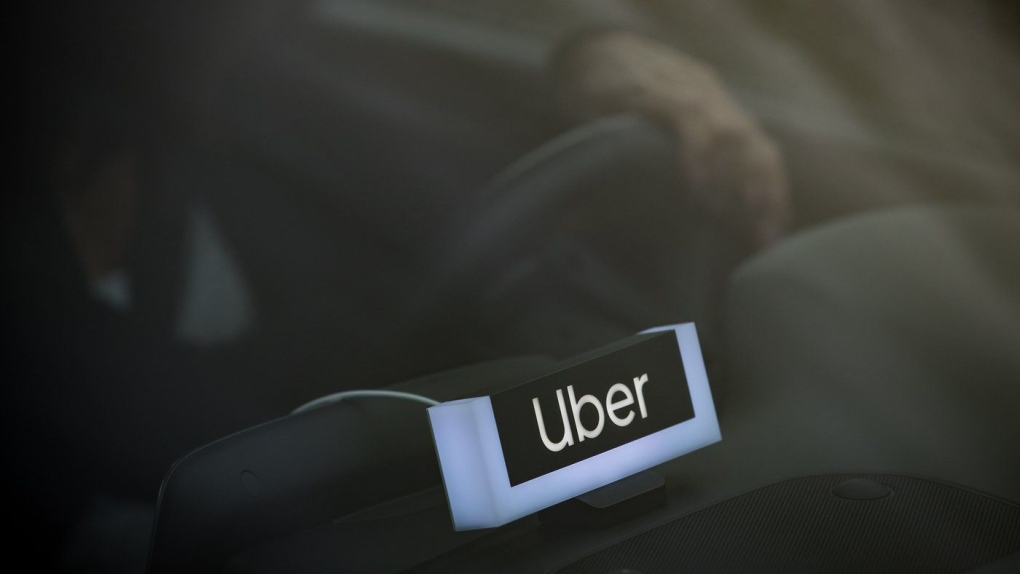Uber’s reply to the new laws.
Ride-hailing company Uber is slamming the British Columbia government’s decision to impose minimum wages and basic labour protections for gig workers,
Uber can get fucked.
If you can’t figure out how to pay your workers properly, and follow the law on “basic labour protections”, you don’t deserve to be in business.
I pride myself that I have never called or used any uber service. They can get fucked. also never book with airbnb, or whatever weird delivery service that expect their “worker” to get paid with tips only. I only order delivery when the restaurant have their own guy doing it.
Big business is full of entitled babies. The minimum wage needs to be $21
Tie minimum wage to general CoL since 1980, and it currently would be something like $28/hr.
Tie minimum wage to a specific CoL such as rental costs, which are governed by the one-third rule, and since 1980 it would have risen to about $38/hr in cities like Kelowna, and likely half again more for places like Vancouver.
Then uber’s business model is untenable
Uber’s goal was always to replace human drivers with autonomous vehicles, it’s just taking longer than they planned.
Tesla Optimus robots are the new Full Self Driving.
You’re not wrong. They’re a tech that will take a decade or two longer than expected to reach maturity, but they will get there eventually.
I meant it more in a sarcastic “over promise - under deliver” sense that Musk is famous for, but maybe one day in the Jetson’s future
Uber’s CEO makes 24 million a year to sit in air-conditioned comfort and make bad, self-serving decisions.
I’d love to see what the new rates are compared to Taxis, we’ll have to wait until September, but I suspect it’s not going to be much of a difference anymore and usage of these services will drop.
It does seem a bit strange that the BC government just recently banned self-driving cars though.
I expected that to be the path forward here, with Vancouver being the first city in Canada to roll out a Waymo-taxi operation. Most of the cost of a taxi/uber these days is labour, not the capital for the vehicle or maintenance and fuel.
Fully autonomous self driving cars just aren’t ready. They probably never will be unless you give them a dedicated lane and grade separate it. But we already have that, it’s called Skytrain.
The way forward is a properly funded transit system not a techbro feverdream.
Waymo has millions of completely driverless miles in multiple cities providing publicly available taxi services at this point, They expanded to Los Angeles already this year and are still planning on operating in Austin by the end of the year too.
It’s clearly viable, and it’s just a matter of time at this point as they polish the rough edges and learn how to scale it better.
Isn’t Waymo famously reliant on having nearly as many remote operators as the have vehicles when they first had to disclose the number, and have outright refused to reveal it more recently?
I’m pretty sure that you’re thinking of Cruise not Waymo. They released info last year that they very frequently had to step in, but that the ratio was still 1 operator per 15-20 fleet vehicles. https://www.cnbc.com/2023/11/06/cruise-confirms-robotaxis-rely-on-human-assistance-every-4-to-5-miles.html
Waymo does have support operators, but I can find no reference to how many they have in comparison to their vehicles.
Waymo has millions of completely driverless miles in multiple cities providing publicly available taxi services at this point,
I’ll wait until the first snowfall that thoroughly covers street markings, and enjoy the chaos that results.
There isn’t a single driverless tech out there that can handle snow of any amount, much less a Canadian winter where markings vanish under a cm or two of compressed snow and ice.
If you don’t think that’s a solvable problem, you haven’t been paying attention. Especially in a city where the software can even pre-map where the roads are in comparison to the buildings in order to not need lane markers at all during adverse weather conditions.
It’s only a matter of time before they can handle more difficult weather conditions. It’s not like humans do a particularly good job when it snows, so it should be pretty easy to beat their performance by simply slowing down more.
in order to not need lane markers at all during adverse weather conditions
Considering that this is still in bleeding pre-alpha and nowhere near production-ready, much less actually in any consumer vehicles whatsoever, makes it a non-option.
And we have these things called snowstorms and fog, which can obscure buildings, and things called snowdrifts that can radically alter the look of the landscape.
Once this tech is actually in a production vehicle, then we can talk. But they have been working on “driverless tech” for almost 70 years now, and it’s still a crayon-munching, glue-sniffing menace to safety, capable of going totally off the rails at the slightest provocation. Hell, it has been shown to accelerate the car TOWARDS stationary obstacles.
Vancouver has snowstorms once every 3-5 years, its not a common problem, and even most people around here don’t try to drive when it happens.
I really don’t think this is as far out as you think. I suspect we’ll see pilots in Canada before 2030
Vancouver has snowstorms once every 3-5 years,
The GVR all the way up to Hope represents 0.8% of British Columbia and 2% of the total length of roads in BC.
Your argument is supremely unpersuasive.
Notice where those self driving cars actually deploy to? Notice something about their climate? Also there not fully autonomous there are humans helping them.
Waymo is currently operating in Phoenix, SF, LA, and is adding Austin in a few months.
Three of those cities are in the top 5 US cities by population, with only New York and Chicago missing.
New York only just announced 2 months ago a permitting process to allow these companies to start trials there. Illinois banned autonomous cars in 2017.
They don’t need to be 100% autonomous to be a good idea or a good deal.






